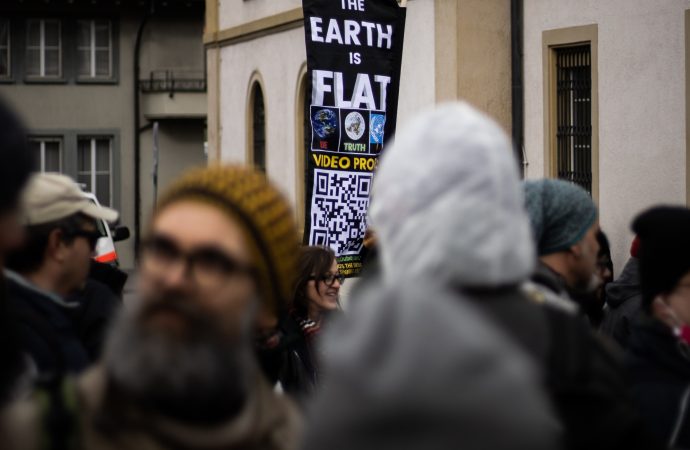Introduction: In an age of widespread scientific knowledge and space exploration, it may seem unfathomable that some individuals still cling to the belief that the Earth is flat. The resurgence of the flat Earth theory has gained attention in recent years, fueled by online communities and conspiracy theories. In this article, we delve into
Introduction:
In an age of widespread scientific knowledge and space exploration, it may seem unfathomable that some individuals still cling to the belief that the Earth is flat. The resurgence of the flat Earth theory has gained attention in recent years, fueled by online communities and conspiracy theories. In this article, we delve into the claims of flat Earth proponents, separate fact from fiction, and explore the scientific evidence that overwhelmingly supports the spherical nature of our planet.
Origins of the Flat Earth Theory:
The idea of a flat Earth dates back to ancient civilizations, but it was widely discredited centuries ago with the advent of scientific discoveries and empirical evidence. The reemergence of the theory in the modern era is largely fueled by misinformation and a rejection of established scientific principles.
The Overwhelming Scientific Consensus:
The scientific consensus is clear: the Earth is a sphere. Overwhelming evidence from various fields of study, including astronomy, physics, geology, and satellite imagery, confirms the spherical shape of our planet. Countless experiments, observations, and measurements have been conducted, leaving no room for doubt.
Debunking Flat Earth Claims:
Flat Earth claims often rely on selective interpretation of evidence, misconceptions, and logical fallacies. They often challenge fundamental scientific principles such as gravity, curvature, and the rotation of the Earth. However, upon closer examination, these claims unravel and fail to stand up to scientific scrutiny.
Gravity and Curvature:
Gravity, a fundamental force of nature, is responsible for the spherical shape of celestial bodies. It causes objects to be attracted toward the center of mass, resulting in the formation of a sphere. The curvature of the Earth can be observed through simple experiments, such as observing ships disappear over the horizon or the phenomenon of a curved shadow during a lunar eclipse.
Satellite Imagery and Space Exploration:
Satellite imagery, from both government agencies and private companies, provides irrefutable evidence of the Earth’s curvature. Images of our planet taken from space clearly depict its spherical shape. Furthermore, space exploration missions, including manned spaceflights and robotic probes, have consistently provided evidence that supports the spherical Earth model.
The Global Navigation System:
The functioning of the Global Positioning System (GPS) relies on the assumption of a spherical Earth. GPS technology uses signals from multiple satellites to triangulate and determine precise locations on the planet’s surface. The system’s accuracy and reliability are based on the Earth’s curvature and its spherical nature.
The Role of Critical Thinking and Education:
Addressing the persistence of flat Earth beliefs requires a concerted effort to promote critical thinking and scientific literacy. Education plays a vital role in equipping individuals with the necessary tools to evaluate evidence, understand scientific principles, and distinguish between reliable sources and pseudoscience.
Conclusion:
Despite the overwhelming scientific consensus and the wealth of evidence supporting the spherical Earth model, the flat Earth theory continues to attract attention and followers. By examining the claims of flat Earth proponents and analyzing the scientific evidence, we can separate fact from fiction and promote a deeper understanding of our planet’s true shape. Embracing scientific literacy and critical thinking is essential for navigating a world where misinformation and pseudoscience persist.

















Leave a Comment
Your email address will not be published. Required fields are marked with *